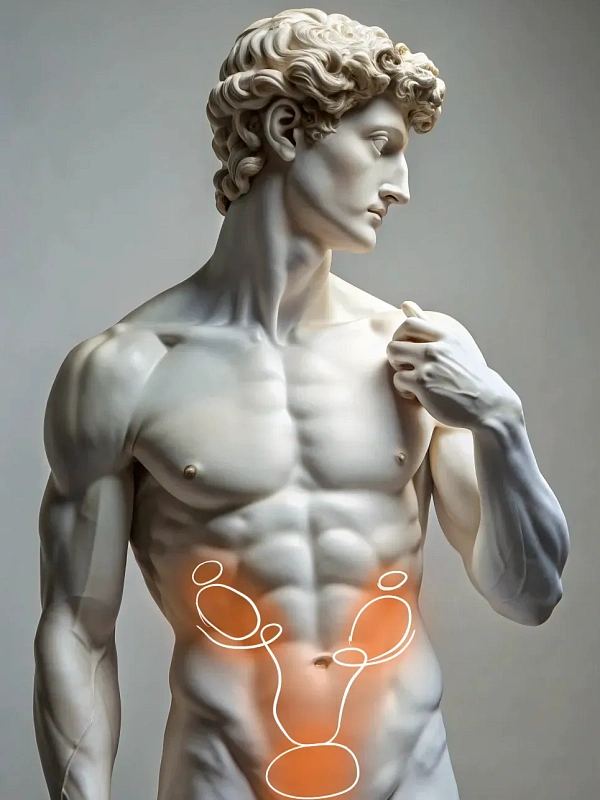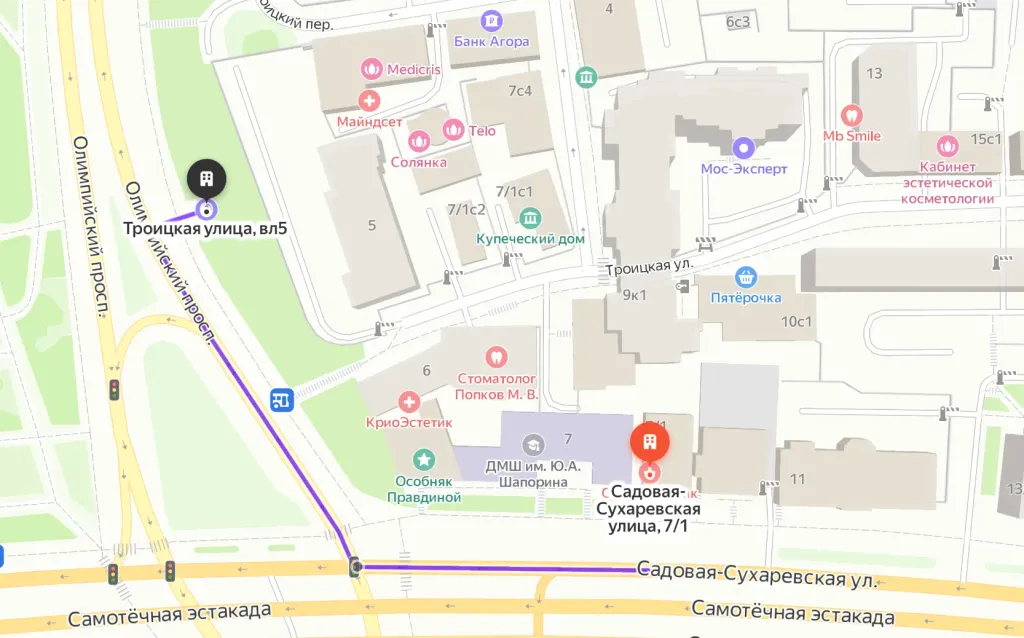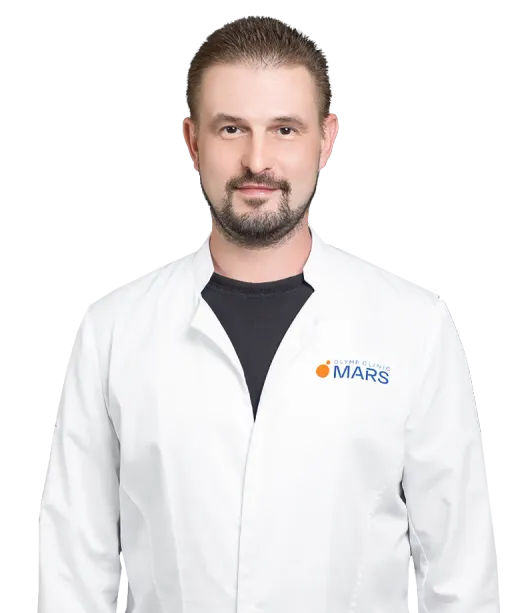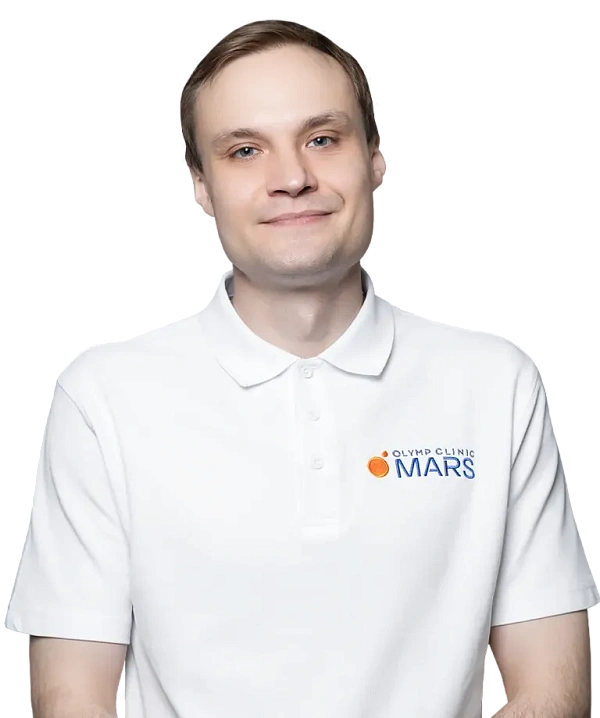Diagnostics and treatment of cystitis
A comprehensive approach to identifying the causes of bladder inflammation and their effective elimination. Our professionals develop individualised treatment plans for each patient.

Cystitis is an inflammation of the bladder, caused by infections, hypothermia, and urinary disorders. Women are more prone to cystitis than men due to the anatomical structure of the lower urinary tract.
Common cystitis symptoms include frequent and painful urination, burning, lower abdominal pain and bloody urine. Cystitis can become chronic or cause complications such as kidney infection if not promptly treated. The treatment depends on its causes: in case of bacterial infection antibiotics are prescribed, in case of viral infection - antiviral drugs, and in case of fungal infection - antimycotics.
Consultation with a urologist for medical history and examination. Common urine test to detect signs of inflammation. Bacteriological urine culture to determine the infectious agent. Ultrasound of the urinary tract. Cystoscopy to assess the condition of the bladder tissue, if necessary.
The patient is advised to collect a morning urine sample for laboratory tests. The urologist will collect data on symptoms, examine the patient and prescribe common urinalysis and urine flora culture to detect the infection and identify the causative agent. Some cases may require an ultrasound of the bladder and kidneys to rule out other pathologies
Based on the urine culture results, the patient is prescribed antibiotics that are most effective against the identified infectious agent. The course of treatment usually takes 5-7 days. Antispasmodics and analgesics may be prescribed to alleviate symptoms. Plenty of water and special urological collections are also recommended to help eliminate bacteria from the bladder.
In the case of acute cystitis, improvement usually occurs within a few days of starting antibiotics. To prevent recurrence, it is important to complete the course of treatment and follow the physician's recommendations. After completing a course of antibiotics, a follow-up urine test is essential to control the treatment's progress. Contact your doctor immediately at the first sign of cystitis symptoms returning.
Benefits
An integrated approach
It allows you to accurately identify the causes of the disease and effectively eliminate them.
Quick diagnosis
Modern methods allow you to quickly and accurately determine the cause of cystitis and begin effective treatment.
Individual treatment regimens
The treatment is developed taking into account the characteristics of each patient.
Prevention of relapses
A set of preventive measures reduces the risk of repeated episodes of cystitis.
Frequently Asked Questions
How to distinguish cystitis from other urinary tract diseases?
Can cystitis be treated without antibiotics?
What should be done in case of cystitis recurring several times a year?
Didn't find an answer to your question?
You can describe your problem in detail and ask a question to the doctor. He will answer you and help you find a solution
Specialists
Find a SpecialistUrologist and Ultrasound Diagnostician.
Urologist, Ultrasound Diagnostician
Similar referral activities
Spermatocelectomy
A surgical procedure to remove a cystic mass in the testicular epididymis.
Microsurgical varicocele treatment
One of the most efficient and safe ways to treat varicocele, particularly when it comes to preserving fertility and minimising the risks of recurrence.
Microsurgical varicocele treatment
Surgical treatment of varicocele. During surgery, the dilated veins of the testicle and the spermatic cord are removed to restore normal blood supply and improve reproductive function.
Minimally invasive ureteral stone removal
An advanced technique aimed at safe and effective removal of ureteral stones with minimal trauma.
Minimally invasive kidney stone removal
An advanced technique aimed at safe and effective removal of kidney stones with minimal trauma.
Circumcision
Circumcision is the surgical removal of the foreskin covering the head of the penis. It may be performed for medical indications, sanitary purposes, or cultural and religious reasons.
How to reach
How to get
From the Belorusskaya metro station of the Zamoskvoretskaya line - exit 4 After exiting the subway, walk through the pedestrian tunnel and climb the stairs. Move towards the railway tracks, go down the stairs immediately after them and walk along the house, then turn right onto 1st Yamskoye Pole Street. At the turn to 3rd Yamsky Pole Street, cross the road at the pedestrian crossing and continue along 1st Yamsky Field Street, after a few buildings on the left you will see Olympus Clinic MARS.
Travel time
9 minutes
Landmark
Olympus Clinic MARS sign
How to get
From the Belorusskaya metro station of the Ring line - exit 2. After exiting the subway, turn left and walk to the pedestrian crossing. Cross the road through two pedestrian crossings and move along the Tverskoy overpass. Go down the stairs immediately after the railway tracks, walk along the house, then turn right onto 1st Yamskoye Pole Street. At the turn to 3rd Yamsky Pole Street, cross the road at the pedestrian crossing and continue along 1st Yamsky Field Street, after a few buildings on the left you will see Olympus Clinic MARS
Travel time
11 minutes
Landmark
Olympus Clinic MARS sign
From the metro station "Tsvetnoy Bulvar"
1 exit to the city, then left to the Garden Ring, at the crossing to the right, crossing the boulevard, one more crossing and at the traffic light to the left. The Olymp Clinic building is located overlooking the Garden Ring to the right of the crossing. Travel time is approximately 9 minutes. Landmark - sign Olymp Clini
From the metro station "Sukharevskaya"
Exit 3 from the metro and 640 meters straight ahead, the clinic will be on the right. Landmark - sign Olymp Clinic
Parking lot map
Exit 3 from the metro and 640 meters straight ahead, the clinic will be on the right. Landmark - sign Olymp Clinic

From Sokol metro station
The last car from the center: follow the signs for Exit 5. From the glass doors to the right and go to the end of the passage. Exit to the city by the steps to the left. After exiting the crossing to the street, go straight along Leningradsky Prospekt to the intersection with Chapaevsky Lane. Next, turn right (onto Chapaevsky Lane) and walk to the Triumph Palace residential complex. Entrance to the territory: through checkpoint No. 1, opposite the Vkusville store, you will need to present your passport. After passing through the checkpoint, go up the stairs to the fountain, opposite it you will see our clinic.
Travel time
10-12 minutes
From the Airport metro station
The first car from the center: follow the Exit 2-3 signs. Turn left out of the glass doors and walk to the end of the passage. After exiting the crossing to the street, go straight along Leningradsky Prospekt to the intersection with Chapaevsky Lane. Next, turn left (onto Chapaevsky Lane) and walk to the Triumph Palace residential complex. Entrance to the territory: through checkpoint No. 1, opposite the Vkusville store, you will need to present your passport. After passing through the checkpoint, go up the stairs to the fountain, opposite it you will see our clinic.
Travel time
12-15 minutes
How to get
Entry to the territory is prohibited, but there are free city parking lots around the Triumph Palace residential complex, where you can easily find a place for your car. Free parking area:





